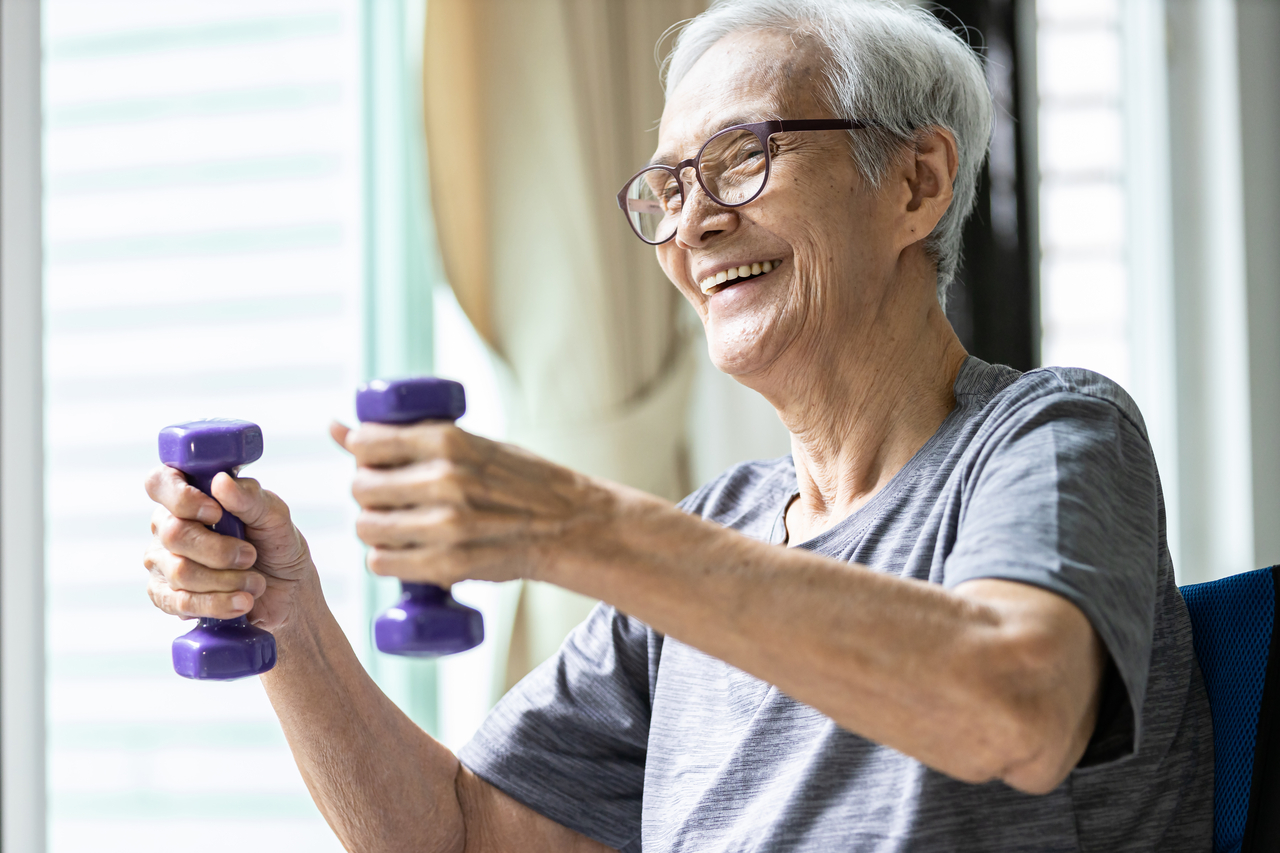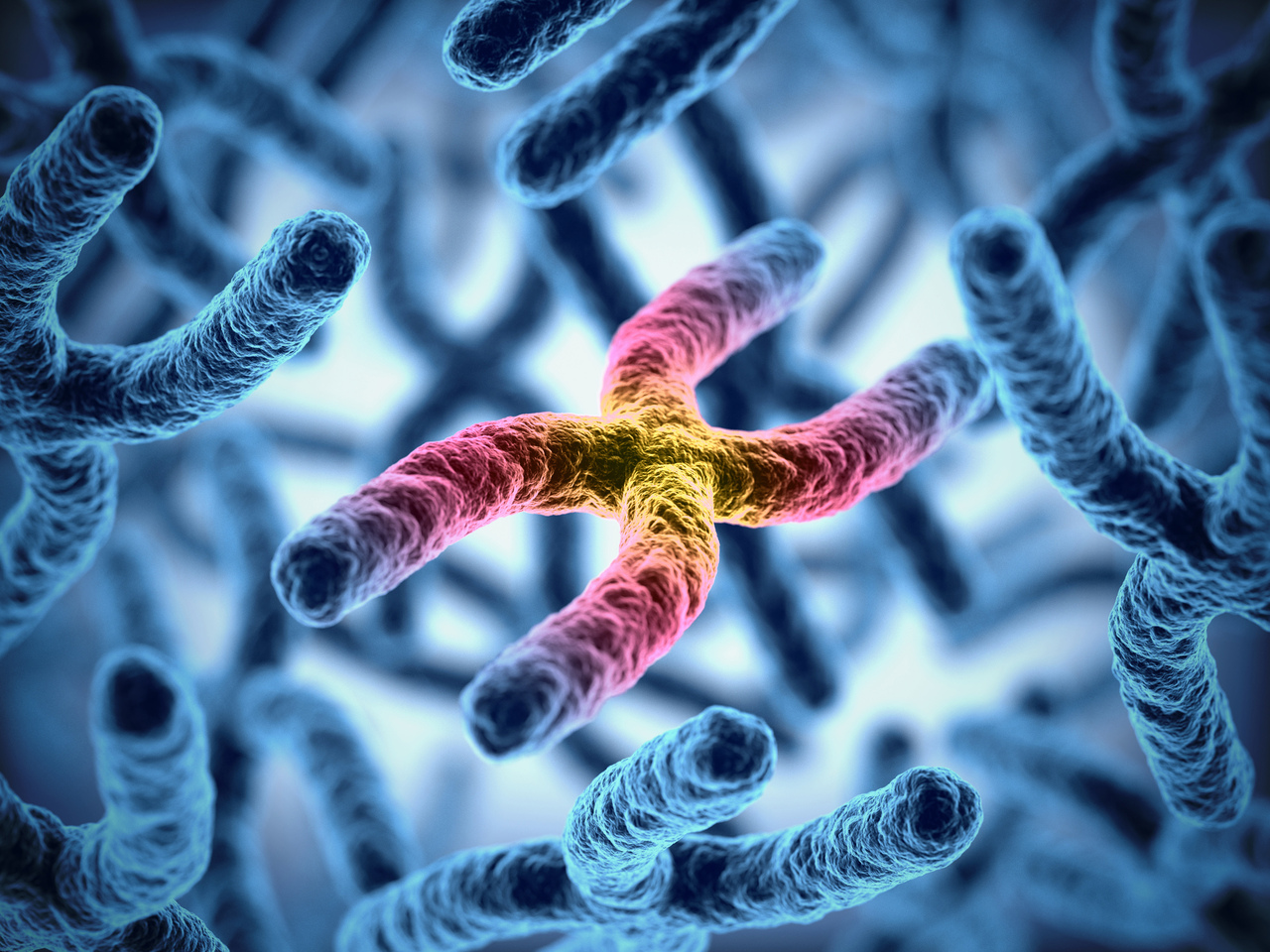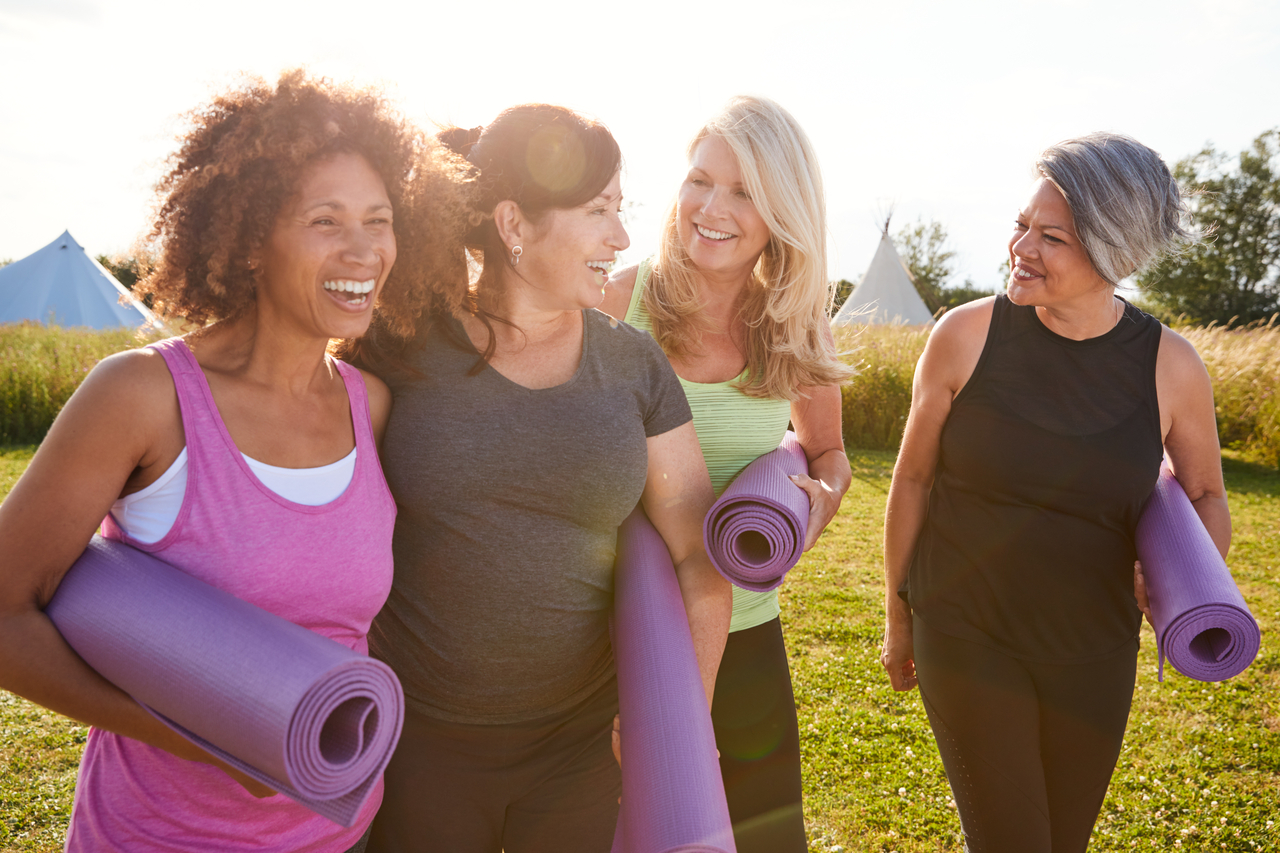When it comes to health, exercise is a no-brainer. We all know that it keeps us healthy and on the right path and that it can be one of the best ways to ward off the more unpleasant aspects of growing older. That’s not very surprising, given that exercise can improve lung and heart health as well as contribute to longer life spans. It also can help delay or eliminate 40 chronic diseases and conditions, put off cognitive decline, help to keep your balance and muscle structure (helping to reduce the risk of falling), and even help to get rid of or reduce anxiety, stress, and depression.
Many researchers have weighed in on the subject, saying that while exercise may not stop aging, it does 100% impact our abilities to defend and repair. For example, if we think of our bodies as machines with a defense system, anti-virus program, and DNA repair facility, exercising improves filesharing, data optimization, connectivity speeds, DNA repair, WiFi – everything! That means that while we still age, we tend to feel, work, and look better than those of us who don’t exercise.
But with ads targeting younger folks who are already healthy and fit, it can seem like it’s out of reach or not worth taking up just because you aren’t a 20- or 30-something.
That’s just not true, however. While it is better to get started younger (as it helps to circumvent “onset” issues like type 2 diabetes, cardiovascular disease, cancer, and other such issues), exercising at any age will help to improve where you are and where you are heading.
Even amongst people with both cognitive and physical issues in nursing homes, improvements were seen with regular exercise. This more or less proves that when it comes to exercise, there’s just no such thing as too little or too late.
Needless to say, you hardly have to sign up for a marathon run or a triathlon to reap the benefits of a healthy, active body. Even just taking the stairs rather than the elevator or walking your dog regularly can help you substantially.
Improves Your Cognitive Function

The National Institute of Aging says that ignoring irrelevant information, planning activities, and shifting quickly between tasks are all signs of good cognitive functions. One of the best and most promising ways to both improve cognitive function and keep cognitive decline at bay is physical activity and exercise.
The data is complete, but there are strong suggestions that physical activity is linked to a reduced risk of Alzheimer’s disease and dementia in general.
One way that researchers believe this works is a little molecule called ‘myokines’. These molecules have several benefits for your brain, including helping to improve your quality of sleep, which helps both your mental and physical health.
Stabilizes and Ups Bone Density

Like strong bones? So do we, and so does your body. To keep your bones strong, your body likes to recycle old bones by breaking them down and replacing them with new bone tissue. However, your bone mass stops increasing around the age of 30. By your 40s and 50s, the process starts to go awry, with you losing more bone than you’re able to make.
Exercising while you’re younger helps to increase your bone density, meaning that you are better prepared to fight off osteoporosis.
Once you reach 50+, your risk of osteoporosis-related broken bones increases substantially, with almost half of all adults in that age category ‘at risk’.
You aren’t powerless just because you’re older, however. Weight-bearing exercises throughout life – even later in life – can help to both strengthen your bones as well as increase bone mass.
Osteoporosis affects women much more than men, so doing aerobics and going for regular walks are crucial after menopause. Even if you’re unable to gain more bone mass, having a regular workout routine will help to prevent more bone loss. Light exercises like swimming, yoga, and cycling are too light to affect your bone loss, but if you can combine them with weight-bearing exercises, you can reduce your risk of fractures and falls as well as improve your balance and bone density.
Build Muscles & Strength

Aging comes with an unpleasant condition; sarcopenia. This is the loss of strength and muscle mass associated with aging. To help combat this, scientists suggest a type of exercise called resistance training. It’s one of the most helpful types of exercise to reduce and slow the effects of sarcopenia. It also helps you maintain your power, strength, and muscles. This will help you do things such as push open a heavy door or open an uncooperative jar. It aids you in day-to-day tasks like climbing stairs, cleaning, and cooking.
Like with many other types of exercise, resistance training can also help fight off diseases and keep them at bay, boost your mood and brain health, and keep your independence much longer.
Resistance training is highly recommended for older adults, as it’s considered both effective and safe, having low rates of injury, with rates of injury maintaining that low rate across all intensities and ages.
Lengthen Telomeres

Have you ever seen the little plastic or wax caps on the end of shoelaces? Telomeres are to DNA strands what those little plastic caps are to shoelaces. This is important because as you age, your telomeres shorten. This inhibits your cells’ ability to divide. Telomere length is also linked to some chronic conditions, such as heart disease, stroke, and hypertension.
More studies are coming out that suggest that people who exercise regularly have longer telomere lengths than people who live more sedentary lifestyles. These have an especially profound impact on older people.
While studies are still coming out and nothing is 100% concrete, enough info has been gathered that it is generally believed that long telomeres lead to a healthier, more enjoyable aging process.
While we still have lots of research to do, we do know concretely that exercise is great for you – body, mind, and soul. To ensure that you’re aging as healthy and gracefully as possible, be sure to keep your body moving at least 5x a week, for a minimum of 30 minutes each day.
Keep in mind that exercise is a cumulative process. You don’t have to do all your exercising all at once, especially if you’re not in your best health right now.
You’ll want to check with your doctor before you start a new exercise routine to ensure that you’re healthy enough for the activity, but for most a good mix of both resistance and aerobic exercises tend to yield healthy, beneficial results.
And the best part? It’s not too late for you to start taking control of your mind and body again. You’re never too old to start improving and ensuring that tomorrow is a better day.




Leave a Comment